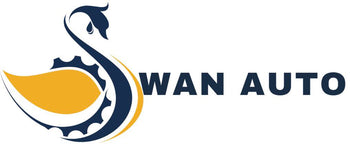The TCM is responsible for interpreting data from the vehicle's various sensors and making real-time adjustments to the transmission's operation. This includes managing the hydraulic pressure that engages the gears, which is crucial for smooth acceleration and deceleration. When the TCM functions correctly, it enhances fuel efficiency and provides a seamless driving experience. However, if the TCM malfunctions, it can lead to a range of transmission issues, affecting not only the performance of the Aveo but also the safety of its operation.
The Chevy Aveo is a small car known for its low cost, good gas mileage, and dependability, which has made it popular over time.
However, like any vehicle, it can encounter issues, and one common area of concern is the Transmission Control Module (TCM). In this comprehensive guide, we will explore everything you need to know about the Aveo tcm, including its function, common problems, and maintenance tips.
What is a TCM?
Before diving into the specifics of the Aveo's TCM, let's first understand what a Transmission Control Module is. The TCM is an essential component of a car's automatic transmission system. It is an electronic device that controls the transmission's operation, ensuring smooth gear shifts and optimal performance. By processing data from various sensors, the TCM regulates the timing and pressure of gear shifts, enhancing the vehicle's overall efficiency.
The Role of the TCM in the Chevy Aveo
In the Chevy Aveo, the TCM plays a crucial role in maintaining the car's performance. It communicates with the engine control unit (ECU) and other sensors to manage gear shifts effectively. Whether you're accelerating on the highway or cruising through city streets, the TCM ensures that the transmission responds appropriately to your driving conditions.
How the TCM Works
The TCM receives input from various sensors, including the throttle position sensor, vehicle speed sensor, and engine speed sensor. By analyzing this data, the TCM determines the optimal time to change gears, ensuring a smooth and efficient driving experience. Additionally, the TCM monitors the transmission's temperature and pressure, making real-time adjustments as needed.
Common TCM Issues in the Chevy Aveo
While the TCM is designed to be durable, it can sometimes experience problems. Here are some common issues that Chevy Aveo owners might encounter with their TCM:
1. Erratic Shifting
One of the most noticeable signs of a TCM problem is erratic shifting. If your Aveo's transmission shifts unexpectedly or skips gears, it could be due to a malfunctioning TCM. This issue can lead to a rough driving experience and may even result in further damage to the transmission.
2. Delayed Gear Engagement
Another common symptom of TCM failure is delayed gear engagement. If you notice a lag when shifting from park to drive or reverse, it could indicate a problem with the TCM. This delay can be frustrating and may also pose safety concerns, especially in traffic situations.
3. Transmission Warning Light
The transmission warning light on your dashboard is designed to alert you to potential transmission issues, including TCM problems. If this light comes on, it's essential to have your vehicle inspected by a professional mechanic to diagnose the cause.
Diagnosing TCM Problems
If you suspect a TCM issue in your Chevy Aveo, it's crucial to have it diagnosed accurately. Professional mechanics use specialized diagnostic tools to read error codes stored in the TCM. These codes provide valuable insights into the problem, allowing technicians to determine the best course of action for repairs.
Self-Diagnosis Tips
While it's always recommended to seek professional help for TCM issues, there are a few self-diagnosis tips you can try:
- Check for Error Codes: Some modern vehicles allow you to check for error codes using an OBD-II scanner. If you have access to one, this can help identify potential TCM problems.
- Inspect Wiring and Connections: Loose or damaged wiring can sometimes mimic TCM issues. Ensure all connections to the TCM are secure and free from corrosion.
- Observe Driving Patterns: Pay attention to any unusual shifting patterns or warning lights while driving. These observations can be helpful when discussing the issue with your mechanic.
Repairing and Replacing the TCM
Once a TCM problem is diagnosed, the next step is to address it. Depending on the severity of the issue, the TCM may need to be repaired or replaced.
Repairing the TCM
In some cases, minor TCM issues can be repaired without replacing the entire module. This might involve fixing wiring problems, updating software, or replacing specific components within the TCM.
Replacing the TCM
If the TCM is beyond repair, replacement is necessary. While this can be a costly procedure, it's essential for restoring your Aveo's transmission performance. Always ensure that any replacement TCM is compatible with your vehicle's make and model.
Maintaining Your Chevy Aveo's TCM
Proper maintenance can extend the life of your Aveo's TCM and prevent future issues. Here are some tips to keep your TCM in good condition:
- Regular Servicing: Follow the manufacturer's recommended service schedule. Regular maintenance checks can catch potential issues early, preventing costly repairs.
- Monitor Fluid Levels: Ensure your transmission fluid is at the correct level and replace it as needed. Clean fluid helps keep the transmission and TCM functioning smoothly.
- Address Warning Lights Promptly: Never ignore the transmission warning light. Addressing issues early can prevent further damage to the TCM and transmission.
Conclusion
The TCM in your Chevy Aveo is vital for its smooth operation and overall performance. By understanding its role, recognizing common problems, and following proper maintenance practices, you can ensure your Aveo continues to provide reliable and efficient transportation. Should you encounter any TCM issues, consult with a professional mechanic to diagnose and resolve the problem promptly.
By taking proactive measures, you'll not only extend the life of your vehicle but also enjoy a safer and more enjoyable driving experience.```

Comments